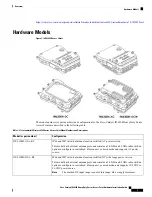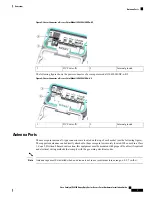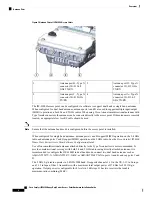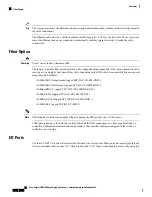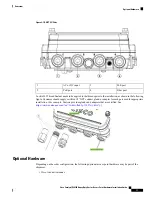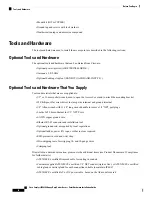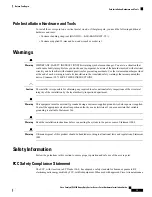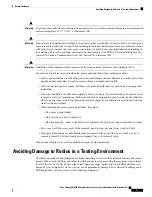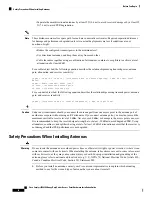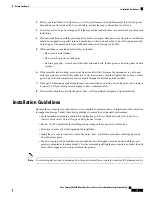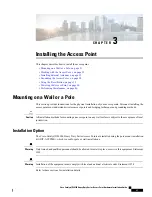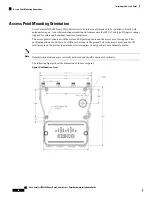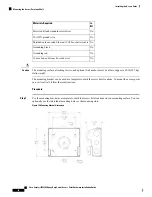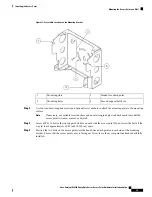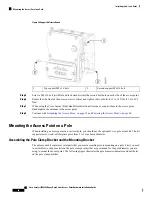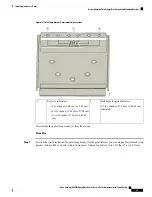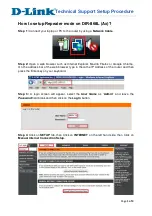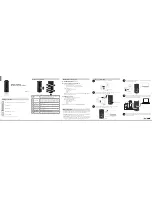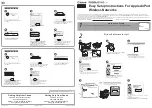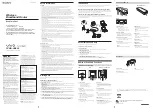
To prevent the system from overheating, do not operate it in an area that exceeds the maximum recommended
ambient temperature of:75° C (167° F) Statement 1047
Warning
Do not locate the antenna near overhead power lines or other electric light or power circuits, or where it can
come into contact with such circuits. When installing the antenna, take extreme care not to come into contact
with such circuits, because they may cause serious injury or death. For proper installation and grounding of
the antenna, please refer to national and local codes (for example, U.S.:NFPA 70, National Electrical Code,
Article 810, Canada: Canadian Electrical Code, Section 54). Statement 1052
Warning
Installation of the equipment must comply with local and national electrical codes. Statement 1074
Warning
For safety and to achieve a good installation, please read and follow these safety precautions:
• Select your installation site with safety, as well as performance in mind. Remember: electric power lines
and phone lines look alike. For safety, assume that any overhead line can kill.
• Call your electric power company. Tell them your plans, and ask them to come look at your proposed
installation.
• Plan your installation carefully and completely before you begin. Successful raising of a mast or tower
is largely a matter of coordination. Each person should be assigned to a specific task and should know
what to do and when to do it. One person should be in charge of the operation to issue instructions and
watch for signs of trouble.
• When installing the access point and antennas, remember:
• Do not use a metal ladder.
• Do not work on a wet or windy day.
• Do dress properly—shoes with rubber soles and heels, rubber gloves, long sleeved shirt or jacket.
• Use a rope to lift the access point. If the assembly starts to drop, get away from it and let it fall.
• If any part of the antenna system should come in contact with a power line, do not touch it or try to
remove it yourself. Call your local power company. They will remove it safely.
If an accident should occur, call for qualified emergency help immediately.
Avoiding Damage to Radios in a Testing Environment
The radios on outdoor units (bridges) have higher transmit power levels than radios on indoor units (access
points). When you test high-power radios in a link, you must avoid exceeding the maximum receive input
level for the receiver. At levels above the normal operating range, packet error rate (PER) performance is
degraded. At even higher levels, the receiver can be permanently damaged. To avoid receiver damage and
PER degradation, you can use one of the following techniques:
Cisco Catalyst IW6300 Heavy Duty Series Access Point Hardware Installation Guide
17
Before You Begin
Avoiding Damage to Radios in a Testing Environment

